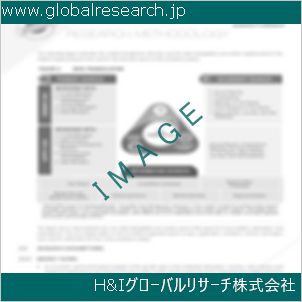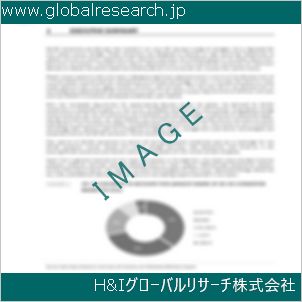Table of Contents
1 Industry Overview of Vinylfluoride
1.1 Definition and Specifications of Vinylfluoride
1.1.1 Definition of Vinylfluoride
1.1.2 Specifications of Vinylfluoride
1.2 Classification of Vinylfluoride
1.3 Applications of Vinylfluoride
1.3.1 Nuclear Application
1.3.2 Non-Nuclear Application
1.4 Industry Chain Structure of Vinylfluoride
1.5 Industry Overview and Major Regions Status of Vinylfluoride
1.5.1 Industry Overview of Vinylfluoride
1.5.2 Global Major Regions Status of Vinylfluoride
1.6 Industry Policy Analysis of Vinylfluoride
1.7 Industry News Analysis of Vinylfluoride
2 Manufacturing Cost Structure Analysis of Vinylfluoride
2.1 Raw Material Suppliers and Price Analysis of Vinylfluoride
2.2 Equipment Suppliers and Price Analysis of Vinylfluoride
2.3 Labor Cost Analysis of Vinylfluoride
2.4 Other Costs Analysis of Vinylfluoride
2.5 Manufacturing Cost Structure Analysis of Vinylfluoride
2.6 Manufacturing Process Analysis of Vinylfluoride
3 Technical Data and Manufacturing Plants Analysis of Vinylfluoride
3.1 Capacity and Commercial Production Date of Global Vinylfluoride Major Manufacturers in 2023
3.2 Manufacturing Plants Distribution of Global Vinylfluoride Major Manufacturers in 2023
3.3 R&D Status and Technology Source of Global Vinylfluoride Major Manufacturers in 2023
3.4 Raw Materials Sources Analysis of Global Vinylfluoride Major Manufacturers in 2023
4 Capacity, Production and Revenue Analysis of Vinylfluoride by Regions, Types and Manufacturers
4.1 Global Capacity, Production and Revenue of Vinylfluoride by Regions 2019-2024
4.2 Global and Major Regions Capacity, Production, Revenue and Growth Rate of Vinylfluoride 2019-2024
4.3 Global Capacity, Production and Revenue of Vinylfluoride by Types 2019-2024
4.4 Global Capacity, Production and Revenue of Vinylfluoride by Manufacturers 2019-2024
5 Price, Cost, Gross and Gross Margin Analysis of Vinylfluoride by Regions, Types and Manufacturers
5.1 Price, Cost, Gross and Gross Margin Analysis of Vinylfluoride by Regions 2019-2024
5.2 Price, Cost, Gross and Gross Margin Analysis of Vinylfluoride by Types 2019-2024
5.3 Price, Cost, Gross and Gross Margin Analysis of Vinylfluoride by Manufacturers 2019-2024
6 Consumption Volume, Consumption Value and Sale Price Analysis of Vinylfluoride by Regions, Types and Applications
6.1 Global Consumption Volume and Consumption Value of Vinylfluoride by Regions 2019-2024
6.2 Global and Major Regions Consumption Volume, Consumption Value and Growth Rate of Vinylfluoride 2019-2024
6.3 Global Consumption Volume and Consumption Value of Vinylfluoride by Types 2019-2024
6.4 Global Consumption Volume and Consumption Value of Vinylfluoride by Applications 2019-2024
6.5 Sale Price of Vinylfluoride by Regions 2019-2024
6.6 Sale Price of Vinylfluoride by Types 2019-2024
6.7 Sale Price of Vinylfluoride by Applications 2019-2024
6.8 Market Share Analysis of Vinylfluoride by Different Sale Price Levels
7 Supply, Import, Export and Consumption Analysis of Vinylfluoride
7.1 Supply, Consumption and Gap of Vinylfluoride 2019-2024
7.2 Global Capacity, Production, Price, Cost, Revenue, Supply, Import, Export and Consumption of Vinylfluoride 2019-2024
7.3 USA Capacity, Production, Price, Cost, Revenue, Supply, Import, Export and Consumption of Vinylfluoride 2019-2024
7.4 EU Capacity, Production, Price, Cost, Revenue, Supply, Import, Export and Consumption of Vinylfluoride 2019-2024
7.5 China Capacity, Production, Price, Cost, Revenue, Supply, Import, Export and Consumption of Vinylfluoride 2019-2024
7.6 Japan Capacity, Production, Price, Cost, Revenue, Supply, Import, Export and Consumption of Vinylfluoride 2019-2024
8 Major Manufacturers Analysis of Vinylfluoride
8.1 Manufacturer One
8.1.1 Company Profile
8.1.2 Product Picture and Specifications
8.1.2.1 Type I
8.1.2.2 Type II
8.1.2.3 Type III
8.1.3 Capacity, Production, Price, Cost, Gross and Revenue
8.1.4 Contact Information
8.2 Manufacturer Two
8.2.1 Company Profile
8.2.2 Product Picture and Specifications
8.2.2.1 Type I
8.2.2.2 Type II
8.2.2.3 Type III
8.2.3 Capacity, Production, Price, Cost, Gross and Revenue
8.2.4 Contact Information
8.3 Manufacturer Three
8.3.1 Company Profile
8.3.2 Product Picture and Specifications
8.3.2.1 Type I
8.3.2.2 Type II
8.3.2.3 Type III
8.3.3 Capacity, Production, Price, Cost, Gross and Revenue
8.3.4 Contact Information
8.4 Manufacturer Four
8.4.1 Company Profile
8.4.2 Product Picture and Specifications
8.4.2.1 Type I
8.4.2.2 Type II
8.4.2.3 Type III
8.4.3 Capacity, Production, Price, Cost, Gross and Revenue
8.4.4 Contact Information
8.5 Manufacturer Five
8.5.1 Company Profile
8.5.2 Product Picture and Specifications
8.5.2.1 Type I
8.5.2.2 Type II
8.5.2.3 Type III
8.5.3 Capacity, Production, Price, Cost, Gross and Revenue
8.5.4 Contact Information
…
9 Marketing Trader or Distributor Analysis of Vinylfluoride
9.1 Marketing Channels Status of Vinylfluoride
9.2 Traders or Distributors with Contact Information of Vinylfluoride by Regions
9.3 Ex-work Price, Channel Price and End Buyer Price Analysis of Vinylfluoride
9.4 Regional Import, Export and Trade Analysis of Vinylfluoride
10 Industry Chain Analysis of Vinylfluoride
10.1 Upstream Major Raw Materials Suppliers Analysis of Vinylfluoride
10.1.1 Major Raw Materials Suppliers with Contact Information Analysis of Vinylfluoride
10.1.2 Major Raw Materials Suppliers with Supply Volume Analysis of Vinylfluoride by Regions
10.2 Upstream Major Equipment Suppliers Analysis of Vinylfluoride
10.2.1 Major Equipment Suppliers with Contact Information Analysis of Vinylfluoride
10.2.2 Major Equipment Suppliers with Product Pictures Analysis of Vinylfluoride by Regions
10.3 Downstream Major Consumers Analysis of Vinylfluoride
10.3.1 Major Consumers with Contact Information Analysis of Vinylfluoride
10.3.2 Major Consumers with Consumption Volume Analysis of Vinylfluoride by Regions
10.4 Supply Chain Relationship Analysis of Vinylfluoride
11 Development Trend of Analysis of Vinylfluoride
11.1 Capacity, Production and Revenue Forecast of Vinylfluoride by Regions and Types
11.1.1 Global Capacity, Production and Revenue of Vinylfluoride by Regions 2024-2029
11.1.2 Global and Major Regions Capacity, Production, Revenue and Growth Rate of Vinylfluoride 2024-2029
11.1.3 Global Capacity, Production and Revenue of Vinylfluoride by Types 2024-2029
11.2 Consumption Volume and Consumption Value Forecast of Vinylfluoride by Regions, Types and Applications
11.2.1 Global Consumption Volume and Consumption Value of Vinylfluoride by Regions 2024-2029
11.2.2 Global and Major Regions Consumption Volume, Consumption Value and Growth Rate of Vinylfluoride 2024-2029
11.2.3 Global Consumption Volume and Consumption Value of Vinylfluoride by Types 2024-2029
11.2.4 Global Consumption Volume and Consumption Value of Vinylfluoride by Applications 2024-2029
11.3 Supply, Import, Export and Consumption Forecast of Vinylfluoride
11.3.1 Supply, Consumption and Gap of Vinylfluoride 2024-2029
11.3.2 Global Capacity, Production, Price, Cost, Revenue, Supply, Import, Export and Consumption of Vinylfluoride 2024-2029
11.3.3 USA Capacity, Production, Price, Cost, Revenue, Supply, Import, Export and Consumption of Vinylfluoride 2024-2029
11.3.4 EU Capacity, Production, Price, Cost, Revenue, Supply, Import, Export and Consumption of Vinylfluoride 2024-2029
11.3.5 China Capacity, Production, Price, Cost, Revenue, Supply, Import, Export and Consumption of Vinylfluoride 2024-2029
11.3.6 Japan Capacity, Production, Price, Cost, Revenue, Supply, Import, Export and Consumption of Vinylfluoride 2024-2029
12 New Project Investment Feasibility Analysis of Vinylfluoride
12.1 New Project SWOT Analysis of Vinylfluoride
12.2 New Project Investment Feasibility Analysis of Vinylfluoride
13 Conclusion of the Global Vinylfluoride (CAS 75-02-5) Industry 2024 Market Research Report
| ※参考情報 フッ化ビニル(Vinylfluoride、CAS番号75-02-5)は、化学式C2H3Fを持つ有機化合物で、その構造はビニル基(−CH=CH2)にフッ素原子が結合したものです。フッ化ビニルは、透明かつ無色の気体であり、特異な臭いを持つことから、取り扱いには注意が必要です。その特性や用途、関連技術について詳しく説明いたします。 フッ化ビニルは、分子中にフッ素が含まれていることから、化学的に非常に安定で、反応性が低いという特徴を備えています。フッ素原子の存在は、物質の親水性や疎水性に影響を与えるため、フッ化ビニルは特定の化学反応において非常に特異な挙動を示します。このため、フッ化ビニルは他のビニル化合物とは異なる特異な性質を持ち、特定の反応条件下で重要な役割を果たします。 フッ化ビニルは、主にフッ素化合物の製造過程において原料として使用されます。特に、フッ素樹脂やフッ素ポリマーの合成に広く利用されています。これらのフッ素化合物は、耐熱性や耐薬品性、優れた絶縁特性を有するため、電子機器や化学工業において非常に重宝されています。特に、フッ素樹脂は、各種のコーティング材や接着剤、熱可塑性材料などに幅広く用いられており、その特性から多くの利用シーンを持っています。 また、フッ化ビニルは、高分子化合物であるフッ素化ビニリデン(PVDF)やポリフッ化ビニル(PVF)などの製造にも寄与します。これらのポリマーは、電子機器、食品包装材、医療機器などの分野で多様な用途を持つため、フッ化ビニルの需要は常に高い関心を集めています。フッ素化ポリマーは、厳しい環境条件下でもその特性を維持する能力を持つため、特に宇宙産業や航空産業においても需要が増しています。 さらに、フッ化ビニルはその化学的特性を利用して、さまざまな化学反応にも利用することが可能です。具体的には、フッ化ビニルは共重合反応により他のモノマーと結合し、複合的な特性を持つ新しい材料を形成することができます。このような新材料は、性能・機能の向上を図ることができ、更に広範な用途での利用が期待されます。 フッ化ビニルの生産は、フッ素化反応を利用して行われますが、このプロセスは慎重に設計される必要があります。フッ化ビニルは、特にその反応性のために安全に取り扱う必要があり、製造過程において適切な安全対策が必要です。フッ化ビニルを取り扱う施設では、呼吸器への影響を避けるために、適切な換気や個人保護具の使用が推奨されます。 環境への配慮も重要なトピックです。フッ化ビニルを含むフッ素化合物は、オゾン層破壊や温暖化の要因とされることがあるため、取り扱いや廃棄において注意が求められます。現在、多くの国ではフッ素化合物の管理が厳格に行われており、リサイクルや再利用が進められています。特に、製造業においては「持続可能な開発」という観点からも、フッ化ビニルとその関連化合物の使用状況の見直しが必要になっています。 結論として、フッ化ビニルはその化学的特性を活用し、様々な産業で重要な役割を果たしている有機化合物です。優れた耐熱性や耐薬品性を持つフッ素ポリマーの原料として、また新材料の開発に寄与する重要なモノマーとして、今後もその利用が進むことが期待されます。一方で、環境への影響や安全性にも十分な配慮が必要であり、今後の研究開発の進展が非常に重要であると言えます。 |
❖ 免責事項 ❖
http://www.globalresearch.jp/disclaimer












